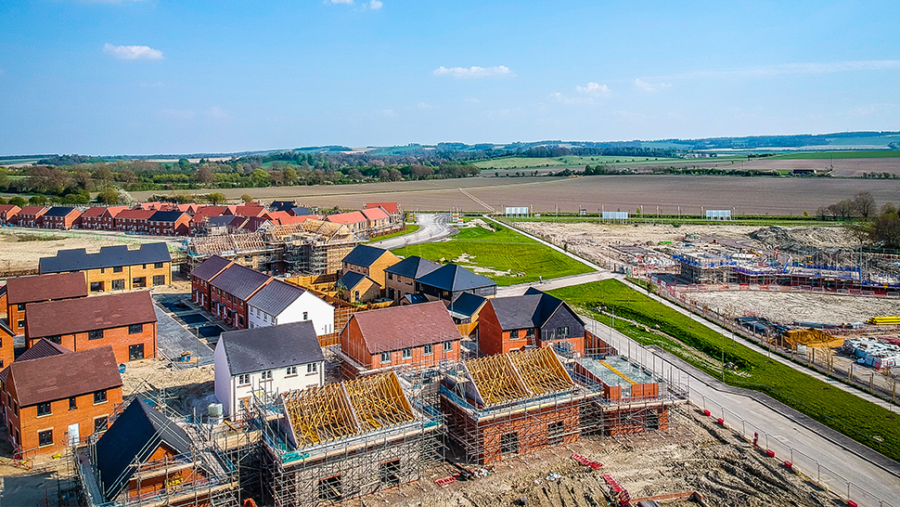

Strategic development of land has been a regular feature of many farms and landed estates. It can provide money to supplement the agricultural business or a fund for reinvestment. A development done well can enhance and strengthen a farm or estate. Like any project doing it well requires careful planning: what should be considered?
What type of development? Frequently the type of development is outside the landowner’s control, driven by planning policy, markets and, in the case of energy projects, electricity grid capacity. However, a landowner is not entirely powerless. There may be an opportunity to influence planning policy at times when development plans are up for review. Landowners can do this themselves or chose a development partner who can provide the expertise and funds to promote the schemes.
If a landowner has more than one option available, they can choose which is the best option, whether that be to sell a parcel of land for development and receive an upfront capital payment or enter into lease or other structure that produces income.
With capital gains tax at over half the rate of income tax, capital sales tend to be favoured. However, some estates may be looking for income, particularly if there are differences between the capital and income beneficiaries of a trust.
Income schemes
A renewable energy project, where the site is leased to the developer, will produce income. With careful structuring, income can be derived from other schemes. Residential or commercial development can be developed using a building lease or licence where the developer shares the proceeds of sale of the units.
This structure can also increase the overall receipts of the landowner as described below. Conversely, renewable energy schemes which typically produce income can be restructured as a joint venture so that some of the receipts are capital.
Timing
Landowners will generally want to conclude agreements as quickly as possible to lock into a deal. Markets move in cycles; what if you’re at the bottom of the cycle? Timing may not be the landowner’s decision; with an option the developer may choose to acquire the land at the bottom of the cycle so minimum prices are essential.
Overages
Overages also need to be considered. These can either be pre-agreed in an option or can form part of the deal on a sale directly to a third-party developer. Overages can be drafted to catch increases in market values. For example, when buying land, a residential developer will value the land based on the estimated sale price of the houses. If it sells the houses for more than it anticipated its profits may be higher. The landowner may want an overage where it captures a share of that increase.
If the landowner has flexibility, it may prefer a build licence, where the developer enters the property under a licence and builds the development. The developed buildings are sold, and the landowner takes a percentage of the sale proceeds. This would capture increases in the value, and as the developer does not have to pay for the land upfront it has a cash flow advantage for the developer – meaning it should be able to pay more to the landowner.
Connection to roads and services
The development may benefit this generation, but farmers and landowners need to consider future generations. What rights may be required for the retained land? It is usual to reserve rights to connect into roads and services. To use the roads and services, the connection points need to be at or near boundaries with the retained land. Landowners need to be able to influence the design of the development to ensure appropriate connection points.
The right to connect to roads and services can be frustrated if the connection points are in places which makes the development of the retained land impossible, or there are obstructions, be it legal or physical, between the roads and the boundaries. If the developer fails to observe covenants to build roads this may not be picked up until the retained land is developed. By this point enforcing against the developer is impracticable. It is better to have an ongoing monitoring role where the developer’s applications for roads and services are approved by the landowner.
This will meet with resistance as the developer will want a free hand to develop the scheme and will resist positive obligations that may affect sales. If there are to be obligations to lay roads and services laid in agreed places, make it clear to the developer from the outset.
Legacy
For some estates it’s not just about the best price for the land, it’s also about the quality of the development. This may be because the estate wants to ensure they leave a high-quality legacy. It may also be because the estate has an eye to future developments and does not want this development to blight future schemes.
This can be particularly important for estates owned by charities or institutions with a high public profile. The issue is the landowner seeking to control the development after the land sale. There are legal mechanisms to secure this, but whichever mechanism is used there is tension between the developer who will have paid for the land and will want a free hand, as engaging with the landowner can introduce costs as delays.
The landowner needs to make it clear there will be legacy requirements at an early stage. The legacy requirements call for careful thought as the developer needs specific requirements it can understand and factor into the development from the outset. High-level, well-intentioned but ultimately subjective requirements could result in multiple arguments as the development proceeds.
Whilst thinking through these points may require some initial upfront investment, they should increase the prospect of a successful development.










